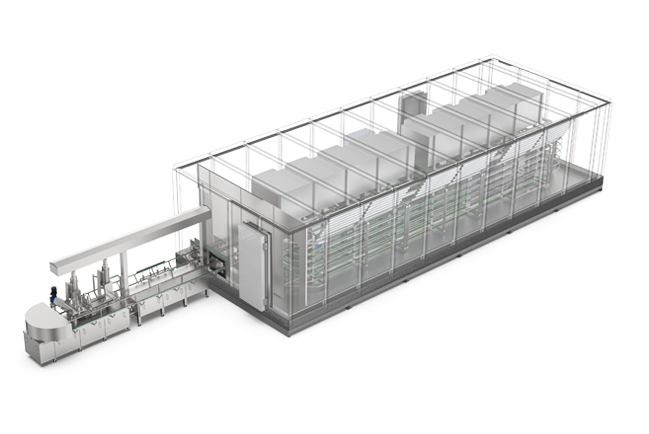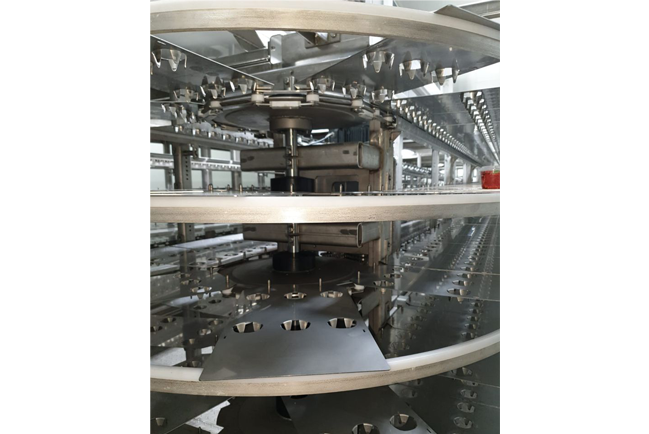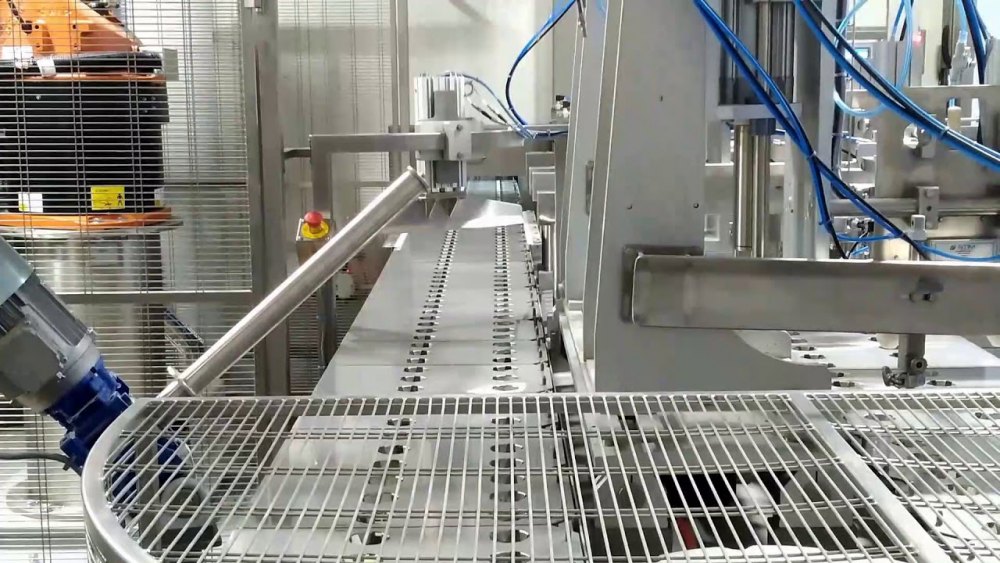




The tray tunnel, commonly used within an extrusion line, is a structure composed of an isothermal chamber. Inside this chamber, a transport mechanism consists of trays connected to a double-spiral stainless steel chain and refrigeration batteries with fans. The internal conveyor belt rolling is controlled by gears positioned on a rotating axis.
On this chain, appropriately shaped stainless steel trays are fixed, sliding on an HDPE guide supported by a tubular stainless steel structure. The system is designed to ensure a horizontal airflow. Air is blown through the product layers and then diverted by deflectors strategically positioned on the wall, ensuring a constant heat transfer velocity, regardless of the amount of product on the conveyor.
The tunnel is insulated with 150mm thick panels and rests on a cement base with appropriate interposed insulation. Alternatively, it can be elevated from the ground and supported by a dedicated steel structure.
The floor consists of a welded stainless steel sheet tank, with the necessary slope for defrosting or cleaning water drainage, preventing water stagnation and ice formation. Inside the tunnel, a steel wall is installed to reduce turbulence and prevent air leakage.
The cooling system is flexible and can use evaporators and refrigeration units with freon, ammonia, or CO2 refrigerants, depending on specific needs.
The control panel of the line is complete with a Touch Screen Operator Panel, a PLC, operation switches, and emergency buttons. The control hardware can be provided by high-quality brands such as SIEMENS, ROCKWELL/ALLEN-BRADLEY, or others of equal caliber.
The turnkey line is delivered, including all necessary accessories and connections.
Additionally, the tray tunnel offers the option of sequential defrosting upon request, ensuring effective maintenance and cleaning of the system. This contributes to maintaining tunnel performance over time and ensuring the quality of the frozen product.
